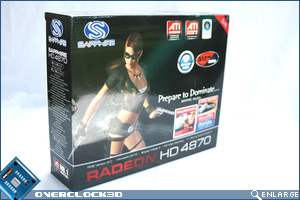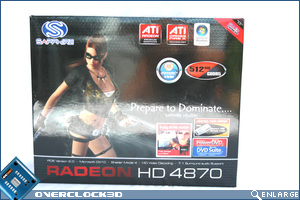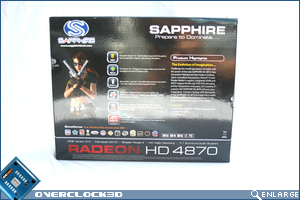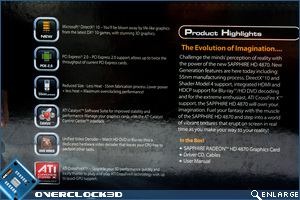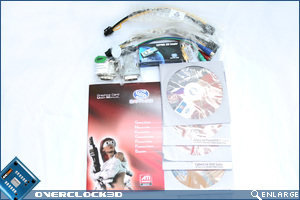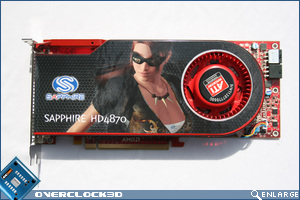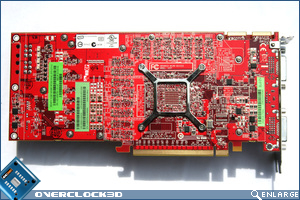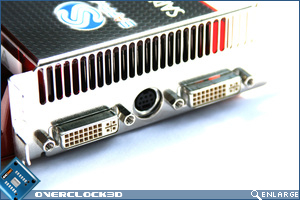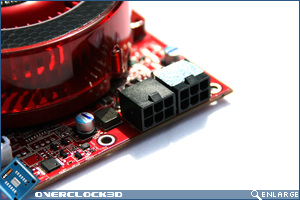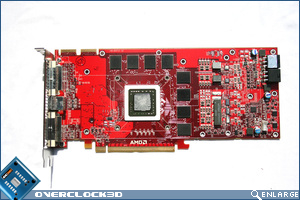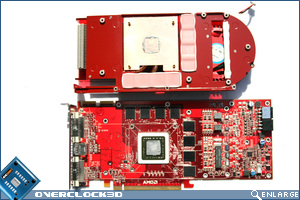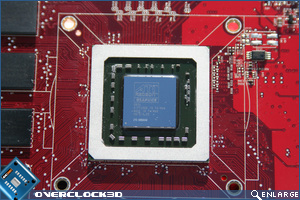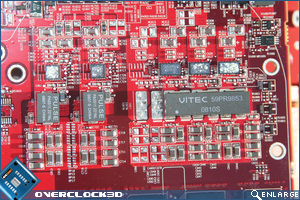Sapphire HD4870 512mb DDR5
Packaging & Appearance
Â
The outer packaging is a standard affair with Sapphire’s interpretation of what can only be assumed as ATI’s ‘Ruby’ clad in a Tomb Raider style costume. ‘Prepare to Dominate’ is emblazoned across the front of the printed cardboard box along with the main features of the card and included software. Surprisingly, the GDDR5 emblem seems little more than an after thought rather than being a priority in the design of the box. To the side, there is a brief run down of the specifications of the card.
Â
Â
Â
The rear of the box goes more in-depth into the features and capabilities of the card, mainly DX10, PCIe 2.0, 55nm process and unified Video decoder capabilities.
Â
Â
When opening the box, I was shocked at the shoddy packing. While the actual materials used were fine, the packing and presentation was dire at best. It was like the card and accessories had just been thrown in the box with 2 slabs of foam used for protection! Sapphire would do well to look at other manufacturers quality packing process in this respect. In contrast, the actual accessories included are both quality and complete. Everything you could want from a GPU package is there including PCIe PSU connectors, DVI & HDMI connectors, driver disks, aswell as a suite of useful software including a full version of the Futuremark 3DMark06 edition. Not only that but Sapphire have also been generous enough to include a 2GB USB pen drive.
Â
Â
The card itself is based on the reference design of the card with a Sapphire sticker on the heat sink fan assembly. The card is the same length as the width of a standard ATX motherboard so there will be no issues with this card overhanging the motherboards like it’s NVidia counterparts. The rear of the card, again, is no different from a reference HD4870. In testing we found the fan to be almost silent and only spun up when under load. This is when the fan becomes noisy and may be an issue for some i.e those not wearing ear phones.
Â
I should also add the card seemed to spin up for 1 second then drop back down at bizarre intervals, such as when browsing the motherboard BIOS, which let me tell you, can be a little shocking when it first happens! Why the card spins up to full pelt then back down to idle instead of a slow increase I have no idea and would certainly prefer the latter of the two options given the choice.
Â
Â
As you can see, the HD4870 reference card is based on a dual slot design. The top of the PCI back-plate is used as a vent and the bottom houses the ports of the card including 2xDVI and an S-Video connection. To the front of the card we see the main power connectors in the form of 2x 6pin PCIe connectors. There is a lot of heat being expelled through the back of the card which was surprising given the 55nnm chip now in place but it is reassuring that the heat sink is doing its job.
Â
Â
Â
Taking the main heat sink off was a very simple process as all the screws are the same size apart from the backplate screws which are spring loaded which is good news for anyone wishing to water cool the card. The spacing of the holes is such that generic water blocks attached to the previous generation of cards should also be transferable to this one – once more keeping the cost down for the enthusiast looking to improve gaming performance without breaking the bank.
Â
The two banks of Qimonda GDDR5 memory run at 1800mhz (giving an effective speed of 3.6ghz!) are cooled via thermal pads as are the VRM’s and while I would have liked to see 1GB being used, 512mb is more than adequate for the time being, provided the previous issues are solved with AA/AF. Looking at the R770XT core itself, which is the only part of the card that is cooled via paste, once more it appears a standard affair but disappointingly is not covered with an IHS so be careful mounting those water blocks! The core is very small for the amount of transistors it has, testament to the 55nm process employed in its design.
Â
Â
The power delivery section of the card is served by a multitude of VRMS with only the smaller of them requiring any cooling. Other voltage is regulated by the use of a Vitec MPI (multi phase inductor) coupled with 2 Pulse VRM’s. Interesting the Vitec module has 2 solder points unused which may allow the V-modders to release yet more power to the HD4870 by means of replacement.
Â
All in all, a very neat and tidy looking card with a great design and adequate cooling abilities. The only real let down is the actual packaging – but if that’s the only area that cuts have been made then I will be happy as although I do like a well packed and presented product, I don’t expect to pay a massive premium for the privilege.



